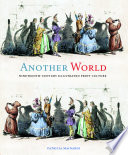

Most ebook files are in PDF format, so you can easily read them using various software such as Foxit Reader or directly on the Google Chrome browser.
Some ebook files are released by publishers in other formats such as .awz, .mobi, .epub, .fb2, etc. You may need to install specific software to read these formats on mobile/PC, such as Calibre.
Please read the tutorial at this link: https://ebookbell.com/faq
We offer FREE conversion to the popular formats you request; however, this may take some time. Therefore, right after payment, please email us, and we will try to provide the service as quickly as possible.
For some exceptional file formats or broken links (if any), please refrain from opening any disputes. Instead, email us first, and we will try to assist within a maximum of 6 hours.
EbookBell Team

0.0
0 reviewsThe remarkable story of the stylistic, cultural, and technical innovations that drove the surge of comics, caricature, and other print media in 19th-century Europe
Taking its title from the 1844 visionary graphic novel by J. J. Grandville, this groundbreaking book explores the invention of print media—including comics, caricature, the illustrated press, illustrated books, and popular prints—tracing their development as well as the aesthetic, political, technological, and cultural issues that shaped them. The explosion of imagery from the late 18th century to the beginning of the 20th exceeded the print production from all previous centuries combined, spurred the growth of the international art market, and encouraged the cross-fertilization of media, subjects, and styles.
Patricia Mainardi examines scores of imaginative and innovative prints, focusing on highly experimental moments of discovery, when artists and publishers tested the limits of each new medium, creating visual languages that extend to the comics and graphic novels of today. Another World unearths a wealth of visual material, revealing a history of how our image-saturated world came into being, and situating the study of print culture firmly within the context of art history.